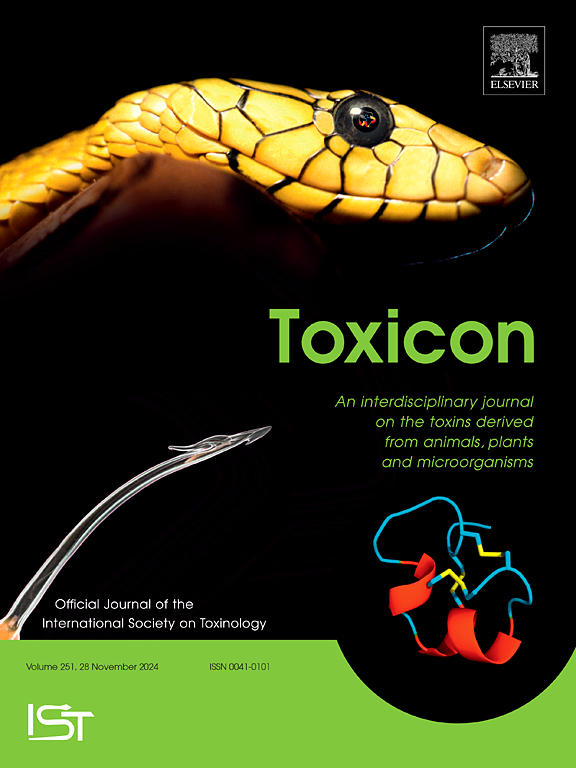Modelling long-term outcomes in patients with post-stroke spasticity with or without BoNT-A treatment on all-cause mortality and secondary cardiovascular events
IF 2.6
4区 医学
Q2 PHARMACOLOGY & PHARMACY
引用次数: 0
Abstract
App. 25 % of stroke survivors develop post-stroke spasticity (PSS) over the first year after a stroke, and they also experience motor weakness, which may prevent effective recovery by restricting mobility and participating in exercise programmes. Patients generally experience rapid improvement with Botulinum Toxin Type A (BoNT-A) therapy for PSS. Unfortunately, clinical trials demonstrating benefits from BoNT-A treatment are of short duration. Consequently, it is not known if treatment-related improvements in mobility could also contribute to lowering the risks of secondary cardiovascular (CV) events and all-cause death.
To assess if BoNT-A injections could also have an impact on long-term outcomes, we developed a 10-year survival model comparing the effects of AbobotulinumtoxinA (aboBoNT-A) injections and rehabilitation therapy (aboBoNT-A+RT) with rehabilitation therapy (RT) alone. The Functional Independence Measure (FIM) appeared to be the only functional outcome allowing us to model the effect of aboBoNT-A injections on all-cause mortality. Stroke survivors who reported better improvement in FIM score during rehabilitation had lower risk of all-cause mortality during follow-up. Patients treated with aboBoNT-A injections + RT showed better improvement in FIM score than patients treated without aboBoNT-A injections. Our modelling results showed that the addition of aboBoNT-A injections to RT led to a reduction of 8.8 % in the risk of all-cause mortality, and a relative increase of 12.8 % in discounted life-years.
The addition of aboBoNT-A injections to RT led to an increase in total costs of £42.329 over 10 years (based on National Health Service (NHS) UK cost collection 2018/2019). In the base-case scenario, incremental costs were driven by the increased number of hours of home care and RT for patients treated with aboBoNT-A injections compared with RT alone. Assuming an incremental cost-effectiveness ratio (ICER) threshold of £30.000, the probabilistic sensitivity analysis found a 73 % likelihood that aboBoNT-A + RT demonstrated cost-effectiveness compared with RT alone.
Our work advocates for the need to consider and to capture the impact of BoNT-A injections on all-cause mortality and secondary events, such as CV events and recurrent stroke, which are prevalent in stroke survivors.
模拟脑卒中后痉挛患者接受或不接受BoNT-A治疗对全因死亡率和继发性心血管事件的长期结局。
25%的中风幸存者在中风后的第一年出现中风后痉挛(PSS),他们还会出现运动无力,这可能会通过限制活动和参加运动项目来阻止有效的康复。A型肉毒毒素(BoNT-A)治疗PSS的患者通常能迅速改善。不幸的是,临床试验证明BoNT-A治疗的益处是短暂的。因此,尚不清楚治疗相关的活动能力改善是否也有助于降低继发性心血管事件和全因死亡的风险。为了评估BoNT-A注射是否也会对长期预后产生影响,我们建立了一个10年生存模型,比较AbobotulinumtoxinA (aboBoNT-A)注射和康复治疗(aboBoNT-A+RT)与单独康复治疗(RT)的效果。功能独立性测量(FIM)似乎是唯一的功能结果,允许我们模拟aboBoNT-A注射对全因死亡率的影响。在康复期间FIM评分改善较好的中风幸存者在随访期间的全因死亡风险较低。接受aboBoNT-A注射+ RT治疗的患者FIM评分改善优于未接受aboBoNT-A注射的患者。我们的建模结果显示,在RT中添加aboBoNT-A注射剂导致全因死亡率风险降低8.8%,折算生命年相对增加12.8%。在RT中添加aboBoNT-A注射剂导致10年内总成本增加42.328英镑(基于英国国民健康服务(NHS) 2018/2019年的成本收集)。在基本情况下,与单独接受治疗相比,接受aboBoNT-A注射治疗的患者的家庭护理和放疗时间的增加导致了成本的增加。假设增量成本效益比(ICER)阈值为30,000英镑,概率敏感性分析发现,与单独RT相比,aboBoNT-A+RT显示成本效益的可能性为73%。我们的工作提倡需要考虑和捕捉BoNT-A注射对全因死亡率和次要事件的影响,如心血管事件和复发性卒中,这在卒中幸存者中很普遍。
本文章由计算机程序翻译,如有差异,请以英文原文为准。
求助全文
约1分钟内获得全文
求助全文
来源期刊

Toxicon
医学-毒理学
CiteScore
4.80
自引率
10.70%
发文量
358
审稿时长
68 days
期刊介绍:
Toxicon has an open access mirror Toxicon: X, sharing the same aims and scope, editorial team, submission system and rigorous peer review. An introductory offer Toxicon: X - full waiver of the Open Access fee.
Toxicon''s "aims and scope" are to publish:
-articles containing the results of original research on problems related to toxins derived from animals, plants and microorganisms
-papers on novel findings related to the chemical, pharmacological, toxicological, and immunological properties of natural toxins
-molecular biological studies of toxins and other genes from poisonous and venomous organisms that advance understanding of the role or function of toxins
-clinical observations on poisoning and envenoming where a new therapeutic principle has been proposed or a decidedly superior clinical result has been obtained.
-material on the use of toxins as tools in studying biological processes and material on subjects related to venom and antivenom problems.
-articles on the translational application of toxins, for example as drugs and insecticides
-epidemiological studies on envenoming or poisoning, so long as they highlight a previously unrecognised medical problem or provide insight into the prevention or medical treatment of envenoming or poisoning. Retrospective surveys of hospital records, especially those lacking species identification, will not be considered for publication. Properly designed prospective community-based surveys are strongly encouraged.
-articles describing well-known activities of venoms, such as antibacterial, anticancer, and analgesic activities of arachnid venoms, without any attempt to define the mechanism of action or purify the active component, will not be considered for publication in Toxicon.
-review articles on problems related to toxinology.
To encourage the exchange of ideas, sections of the journal may be devoted to Short Communications, Letters to the Editor and activities of the affiliated societies.
 求助内容:
求助内容: 应助结果提醒方式:
应助结果提醒方式:


